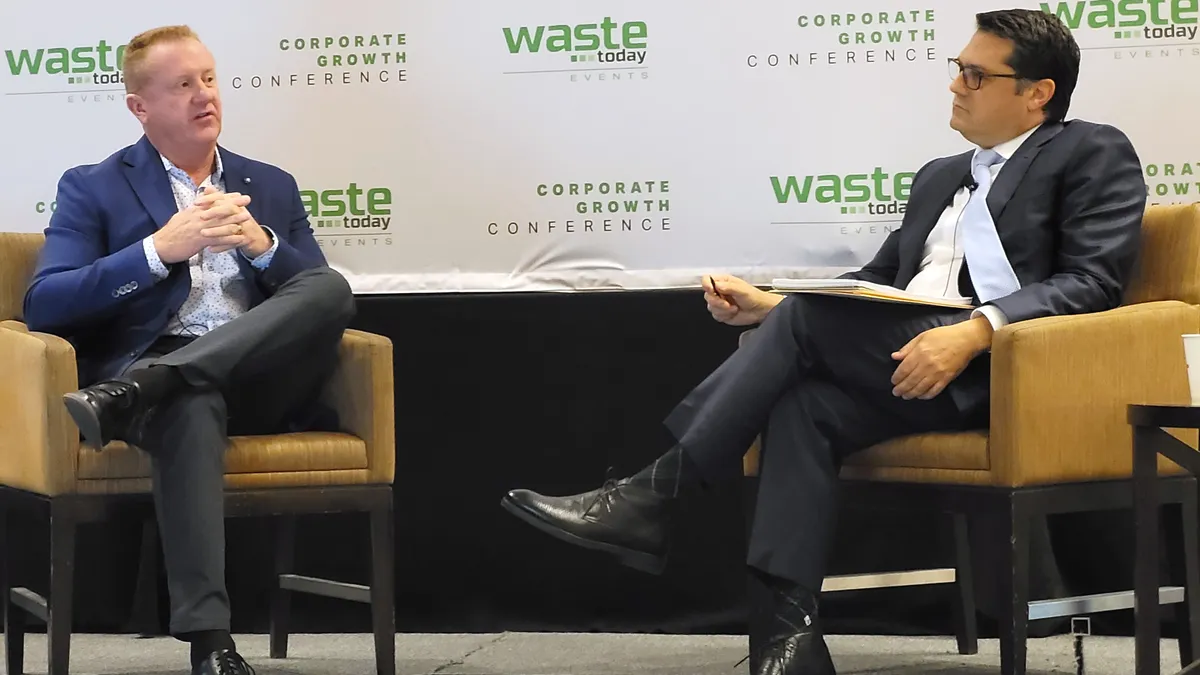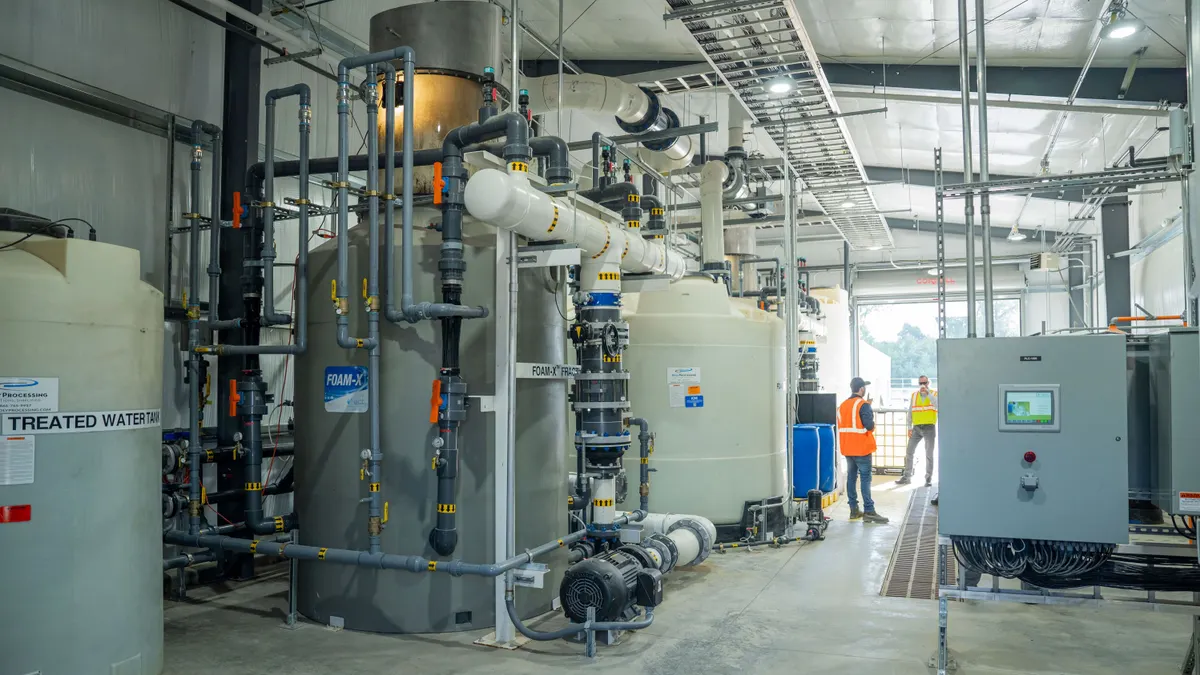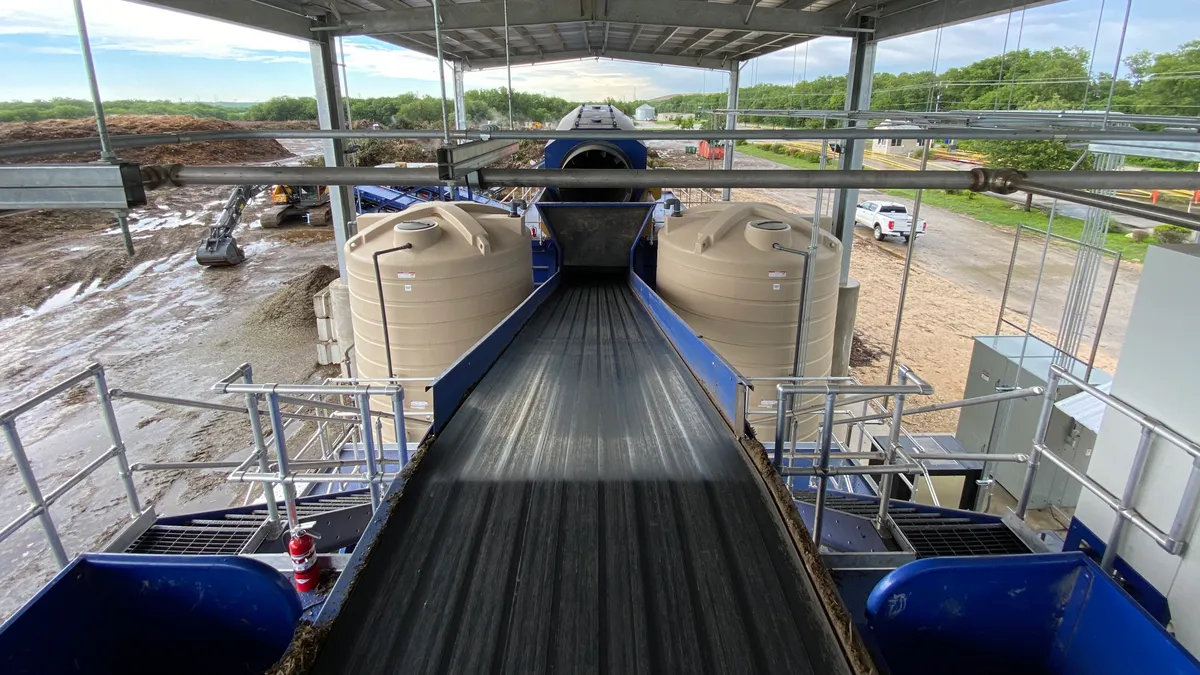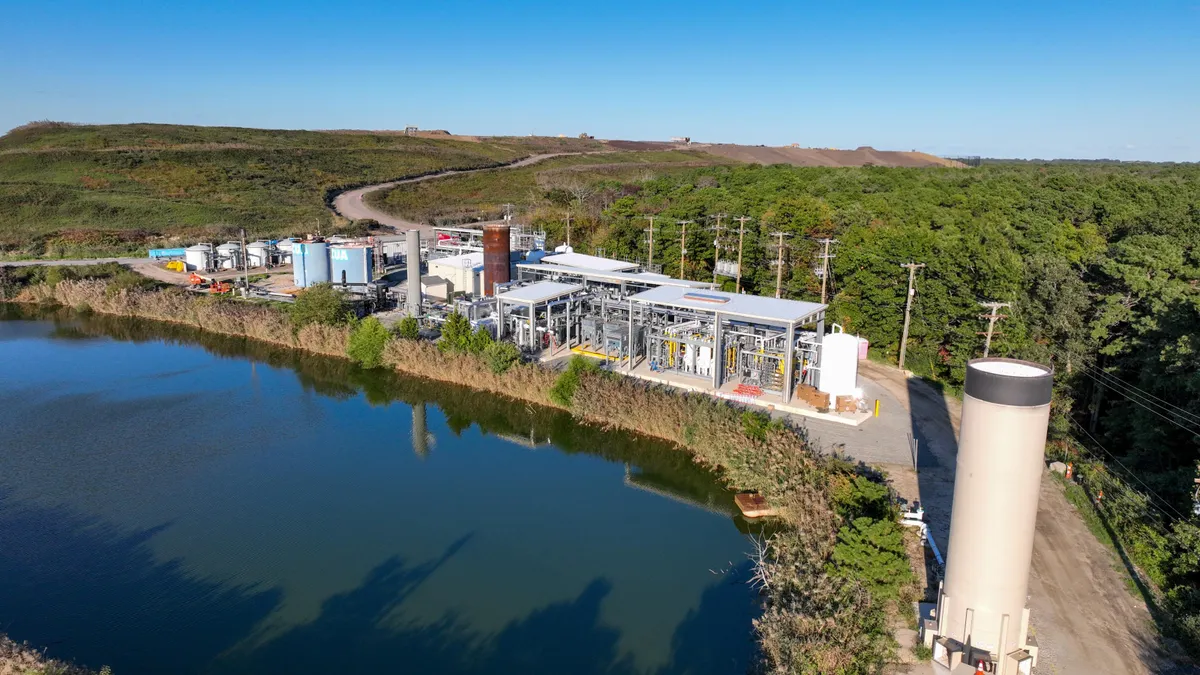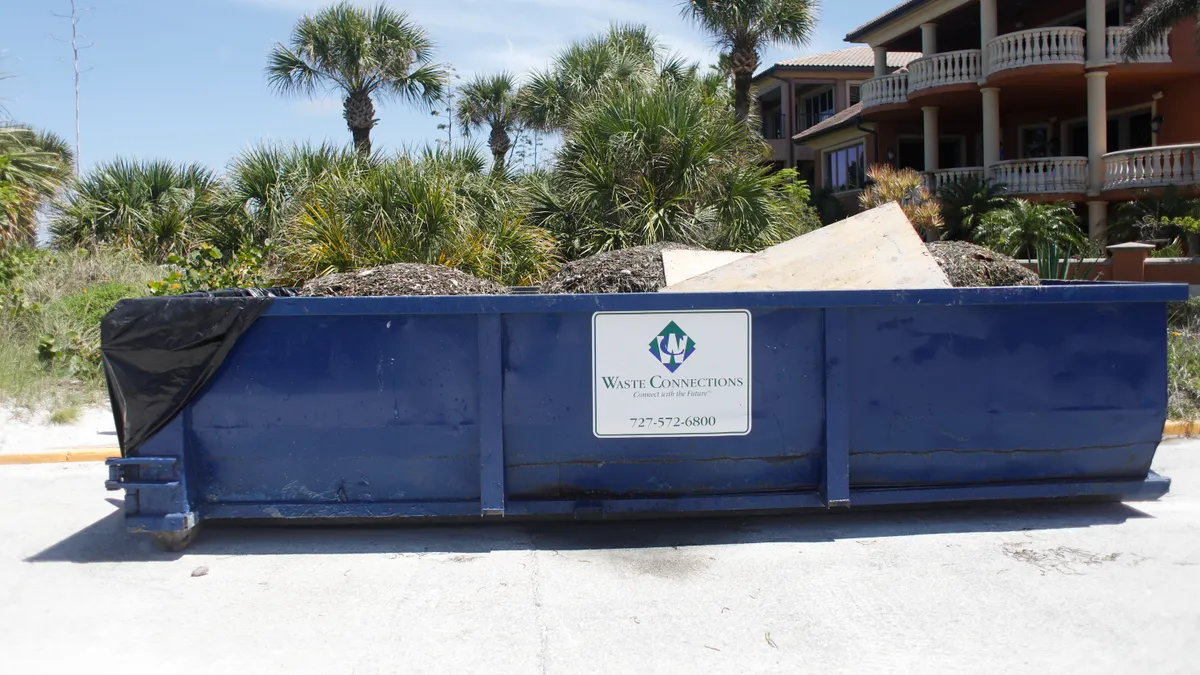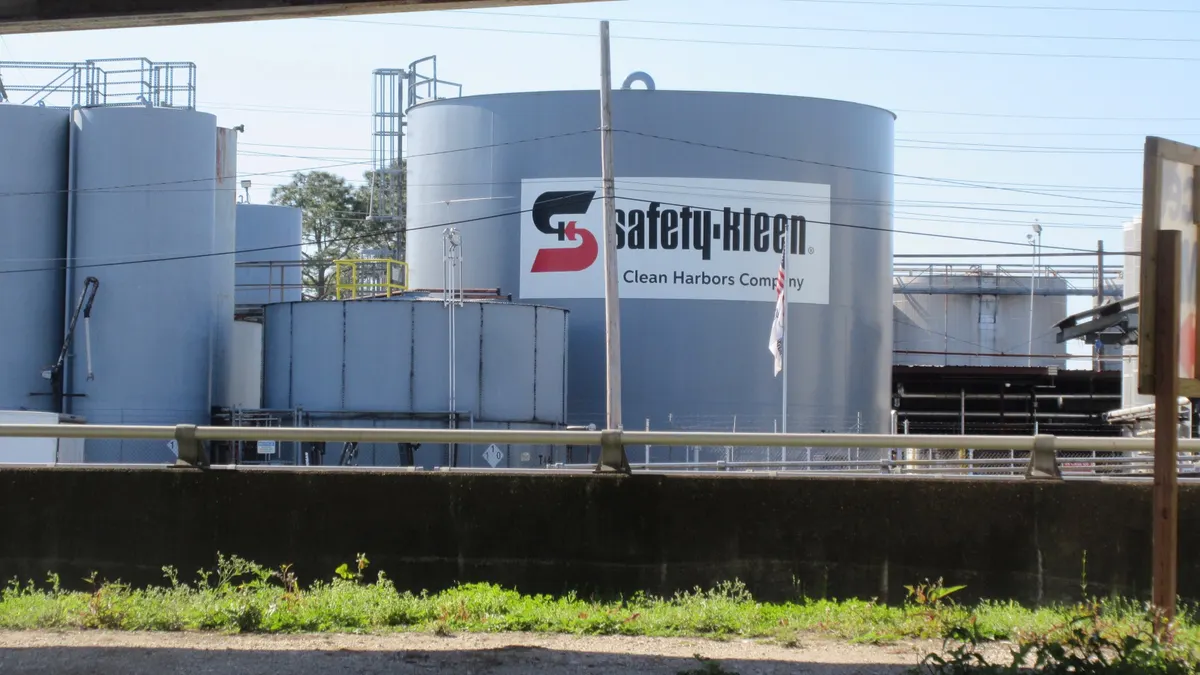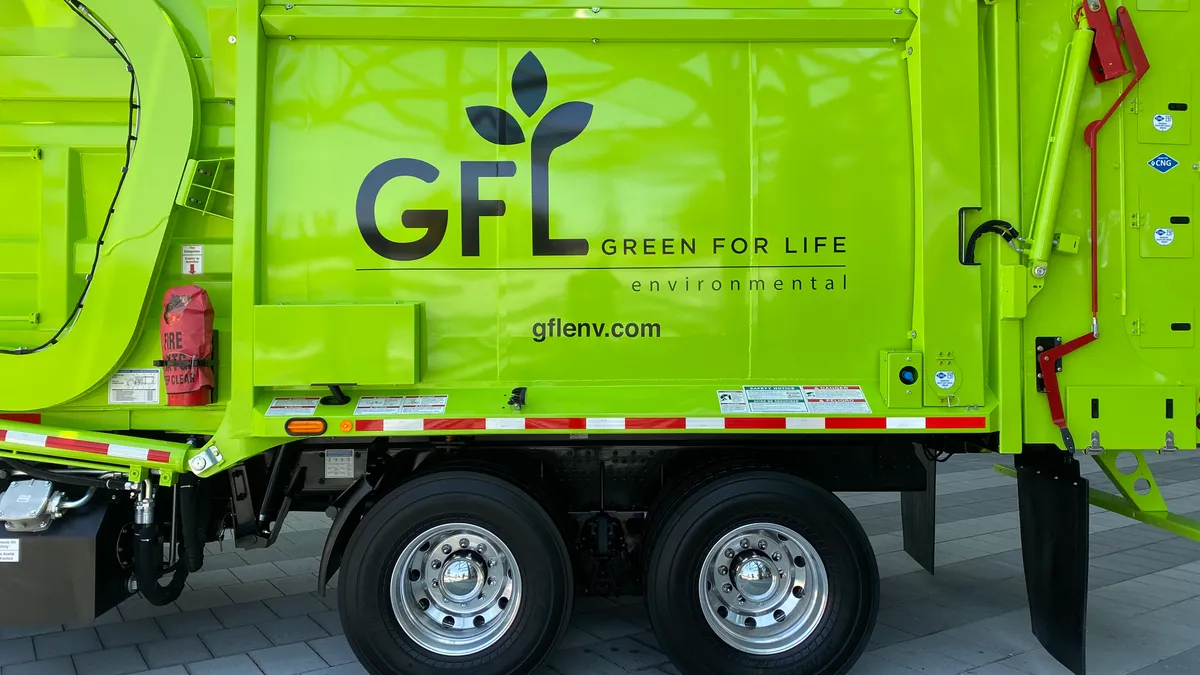Ron Mittelstaedt spent nearly four years away from the CEO role at Waste Connections and returned to the position earlier this year, upon Worthing Jackman’s departure. But during his four years outside the CEO role, when he served as executive chairman for the board of directors, Mittelstaedt kept tabs on the industry and noticed a lot of change occur in that timeframe.
Mittelstaedt just marked six months back in the CEO role and detailed industry changes — both short-term since 2019 and long-term since he founded Waste Connections in 1997 — during last week’s Corporate Growth Conference in Chicago.
During Mittelstadt’s time away, the COVID-19 pandemic created challenges for waste companies, who were “just trying to make sure you’re taking care of your employees and customers” while providing essential services. Coming out of that, “then you go right into the toughest labor market and hyperinflation. ... So that has really characterized things up until, I’d say, the beginning of [2023].” This year, the situation has finally somewhat normalized, he said.
Another difference is the increased investor interest in renewable natural gas, which “really wasn’t a very big focus at all” in 2018 and 2019, he said. Even more significant is that over the last three years, the industry has experienced an “explosion of technology,” both on the vehicle and MRF side, Mittelstaedt said. He especially highlighted the adoption of robotics and the influx of artificial intelligence introduced over the last year. “Even though it’s only been four years, those are definitely different,” he said.
Automation particularly helps at MRFs, because the machinery makes it “a far less labor intensive business.” Plus, “the product quality that can be generated through automation is much greater,” which results in higher commodity values, he said.
“You're taking a business that has had great volatility and you're decreasing the volatility in the operating and the product quality side through automation: robotics, optical sorting, air classifiers, magnetic heads, all kinds of different things,” Mittelstaedt said.
In addition to better material quality, more municipal and state regulations around diversion and a business model that’s changing to pay-for-service is resulting in a recycling sector that is “rapidly changing, and it is rapidly improving,” he said. “I think there will be better diversion in the future that does lengthen the lives of landfills.” Referencing the changing model, he added that customers need to begin to understand that “we’re not willing to provide a service based on commodity value.”
Mittelstadt emphasized the heightened focus on sustainability and ESG goals and practices that “became very big between ‘19 and ‘23.” That being said, he contends that residents and small businesses don’t prioritize sustainability. But large manufacturers and municipalities do care about sustainability, so “it may be only 1 or 2% of our customers, but it’s much larger in terms of revenue.”
Sustainability is “a large issue and it’s not going away.” From an investor standpoint, “it was all they wanted to talk about 18 months ago. The pendulum has swung back to the middle as they’ve learned that this isn't going to be quite what they thought. It's going to take a lot longer and the returns are debatable,” Mittelstaedt said, adding that this “wait-and-see” phenomenon is only occurring in the U.S., not in Europe or Canada.
His macroeconomic view of the waste side of the business is that it’s stable without “any real signs of deterioration anywhere,” but “the market’s overall very flat. There’s very limited economic growth.” Given other economic factors, such as record inflation and a cooling housing market, a soft landing “would be a hell of an achievement. And right now it appears that’s what’s occurring,” he said.
Mittelstaedt said investor activities also have changed significantly in the last 10 years, but especially since Waste Connections formed in the late ‘90s. “That was a completely different time” when “investors really cared about one thing and one thing only: They cared about [earnings per share] growth and nothing else,” whereas now that’s not a major consideration, he said. “There was no discussion of free cash flow. There was no discussion of returns on investment capital. ... It was somewhat of the Wild West in public markets.”
Today, investors focus heavily on earnings before interest, taxes, depreciation and amortization; margin; free cash flow per share; free cash flow conversion and return on invested capital, he said. For example, when USA Waste Services set out to buy WM in 1998 it had “$2 billion in revenue and negative $400 million a year free cash flow. If you had negative free cash flow today, you wouldn’t be sitting here. It’s a completely different environment,” he explained. “From my perspective, that's a good thing. Because it forced the industry over time to bring financial rigor to running the public companies and driving returns and improving price and improving margins.”
Despite overall flat macroeconomics, M&A has been very strong since 2021, according to Mittelstaedt.
“It’s been very strong by historical standards for the first half of 2023. I think you will see that slow some from where it's been,” he said. Namely, high interest rates impact the cost of capital and could have a chilling effect on M&A.
In addition, this year’s proposed changes to the Hart-Scott-Rodino Act are causing potential complications for all industries, he said. “People have some real trepidation about going through the HSR process. And so I think that’s changing some companies’ view of M&A,” according to Mittelstaedt. “I think that will continue to be an increasing challenge, certainly for large players or markets.”
Evolutions within the value chain and with the vertical integration model also contributed to a different landscape for M&A than in past decades, especially on the landfill side, he said.
“Landfill ownership has been substantially consolidated amongst the ... largest five public companies,” Mittelstaedt said. “So the ability to go out and find a fully integrated market is a challenge. They’re out there, but there’s far less today than 15, 20 years ago.”



